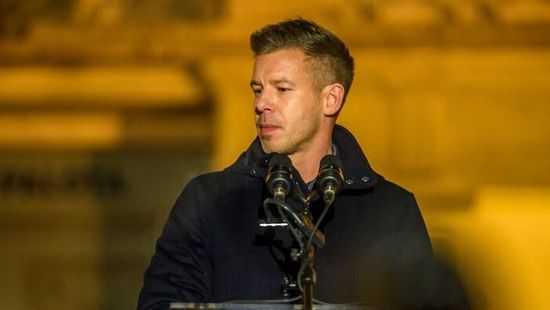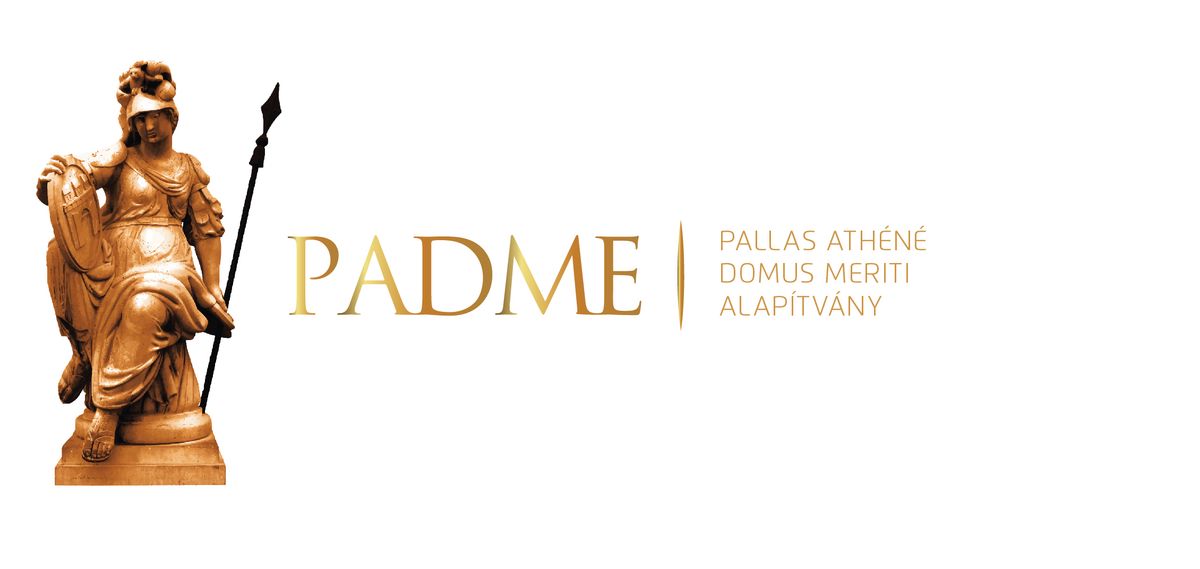Magyar Péter foghatja a fejét: ezért nem tudott növekedni a Tisza Párt népszerűsége

A szakértők szerint olyasmit igyekeztek vitorlájukba fogni, amiből nagyon nem jött össze a politikai haszonszerzés.

“The ongoing debate over federalism was at the forefront of fighting slavery and a bloody Civil War and, later, dividing the country over such issues as enacting the New Deal, desegregating public schools, implementing capital punishment, regulating abortion rights, recognizing same-sex marriage, and protecting public safety by wearing masks and enduring lockdowns during a highly infectious, and deadly, pandemic” – Christopher Banks, professor at the Kent State University, pointed out in a conversation with Lénárd Sándor, researcher at the National University of Public Service.

Christopher BANKS is professor of law and politics at the Kent State University in Ohio. Banks teaches there, among others, courses in American politics, public administration, terrorism and human rights as well as constitutional law, civil rights and liberties, the judicial process, American political theory, and American politics. Among others, he is coauthor of the book "The U.S. Supreme Court and New Federalism: From the Rehnquist to Roberts Court."

Looking back at the legal and judicial history of the United States one can reveal a quite interesting paradox. While, in the old times, justices of the Supreme Courts were quite often former politicians, state governors, senators, secretary of states or even a president in the case of William Howard Taft, today the overwhelming majority of them are former judges or other actors of justice system. At the same time while the confirmation process used to be more smooth, today every confirmation process turns into a ferocious political battle. What changed the perception as well as the political weight of the federal judiciary in your view?
It might not be as much of a paradox because the lure of lifetime tenure remains a strong incentive for federal judges who consistently have been recruited from a professional elite. In this light, the federal courts consist of a relatively homogeneous cadre of professional judges, or a career judiciary, that is not that representative of the whole population. Although the bench has become more diversified in recent years, demographic statistics show that they are disproportionately staffed by male, white and affluent persons that are Protestant. What has changed is the politics of the confirmation process, especially when there is a divided U.S. Senate and Presidency (since Article II of the U.S. Constitution requires the Senate give “advice and consent” to presidential judicial appointments). An important harbinger of things to come was the failure of Robert Bork, a Reagan pick, to ascend to the Supreme Court in 1987, largely due to the threat he posed to liberals as an out-of-the mainstream nominee who was poised to replace Justice Lewis Powell as a fifth vote on deciding momentous culture war issues. Bork’s outspoken advocacy as an originalist constitutional jurist jeopardized abortion and other civil rights because it denounced the concept of unenumerated rights. Although
Bork was highly qualified, liberal interest groups mobilized for battle,
and in a high profile grassroots struggle, the Senate voted Bork down. As a precedent and since then, controversial nominations to the high Court have been increasingly scrutinized by ideological opponents and interest groups, a phenomenon that has been exacerbated by hyper-partisanship, 24/7 traditional and social media coverage and, in general, hardball judicial confirmation “obstruction and delay” politics in the U.S. Senate during times of divided government.
Judicial politics has always been part of the politics of American Presidents if we think of the “midnight judges” of President John Adams. I am wondering when it became a decisive factor and whether and if so, how different Presidents succeeded in pursuing a certain type of judicial politics.
“Packing the courts” has a longstanding history. In modern times, via his court packing plan, after his reelection President Franklin Roosevelt tried to enlarge the U.S. Supreme Court during the New Deal era because the Court had repeatedly rejected FDR’s attempt to implement the New Deal through bureaucratic action and federal intervention in an effort to get the country out of the Great Depression. The famous “switch in time that saved nine”—when the Court reversed course with its West Coast Hotel v. Parrish (1937) decision—thereafter began a trend of ratifying the New Deal; and while there is disagreement on the point, some scholars have claimed that the institutional threat to change the Court’s composition and fill it with New Deal progressive justices was probably in the back of the Court’s mind when it shifted course. Modern presidencies, most notably Ronald Reagan, G.W. Bush and Donald Trump, have used the executive office to pack the court with their ideological preferences; but others, such as Jimmy Carter, Bill Clinton and Barack Obama, had other goals in mind, including finding nominees that exhibited professional competence (called by scholars “objective [legal] merit”) or diversifying the bench. Notably, as a candidate,
President-elect Joe Biden committed to studying the issue of enlarging the Supreme Court if he was elected in an effort to diminish the Court’s conservative influence
that was solidified with Amy Coney Barrett’s swift ascension to the high court at the end of Trump’s first term. All told, federal judicial appointments are often a function of who is sitting in the White House and how they perceive using the courts as vehicles for making them at least symbolically representative of the people or, more strategically, the agents of ideological, social or legal policy change.
However, I may argue a bit since critics are pointing out that Justices have increasingly embraced the theory of “living constitutionalism” since the 1950s. This provided the Justices with a path to impose their own policy preferences instead of what the law actually provides for. Modern Republican Presidents embraced "originalism" to counter this trend, but they aspirations often failed. How do you see these judicial philosophies unfolding?
Originalist justices are no different than living constitutionalist justices in the sense that both types of judicial philosophies are used to achieve personal preferences about public policies. Justice Antonin Scalia admitted as much in some of his writings that suggested he sometimes was a “faint-hearted” originalist, which meant that he cannot always apply judicial self-restraint using originalist philosophy. The best example, critics would say, is D.C. v. Heller (2008), a Second Amendment ruling declaring there is a personal right to self-defense in the home, a conclusion reached by using originalism but one that can be questioned because there is no explicit text in the Second Amendment that states that self-defense is a constitutional principle. Non-originalists, or living constitution justices, as well, use that philosophy to reach result-oriented outcomes, as Justice William Brennan freely admitted in capital punishment cases because he argued that the Eighth Amendment’s cruel and unusual clause must be interpreted in their contemporary “evolving standards of decency” context. On the Roberts Court, Justice Stephen Breyer’s endorsement of pragmatism is another iteration of a living constitutionalist approach. Perhaps the only difference between originalists and non-originalists is that the former denies they are making up the law while the latter are more apt to admit it.
If we take a look at the other side of the coin; how in your view do presidential judicial politics or even an empty seat on the Supreme Court could influence the outcome of elections?
Bush v. Gore (2000) and, possibly in light of lame duck President Trump’s promise to fight the 2020 presidential election results, tells us all we need to know about how the Supreme Court may impact an election outcome.
In Bush, the justices interceded and effectively decided the election during the contentious recount over ballots that were cast in Florida,
a key state that held the decisive number of electoral votes that would tip the election results to either G.W. Bush or Al Gore. One of the key debates on the Court was whether it should end the election, in effect, by declaring that the recount needed to stop in accordance with federal law, an issue that the dissenters claimed that was improper as a non-justiciable political question. The Bush plurality claimed it had to act to settle the election, lest risk a constitutional crisis. Regardless, fast forward to 2020, where the Trump campaign prematurely claimed it was victorious before the ballots were certified in battleground states, thus laying the foundation for litigation that called into question the legitimacy of the election results and politicizing the issue in the process. Beyond micro-managing election results and democracy itself, who is sitting on the Supreme Court may be decisive in determining the outcome of contentious and disputed elections, thus registering why the Trump administration thought it was vitally significant to put another conservative, Amy Coney Barrett, on the Court in time to decide electoral disputes should the need arise.
Although the judiciary was famously told to be the weakest among the three branches of the federal government, it was nevertheless able to influence or even decide crucial theoretical debates such as the sovereignty debate in McCulloch v. Maryland. You are coauthor of the book "The U.S. Supreme Court and New Federalism" in which you examine a uniquely American constitutional principle that is the "Federalism". Can you shed light on the function of this legal principle as well as on the reasons why it is in the forefront of current debates before the federal judiciary?
“We the People” versus “We the States” has been an integral part of debates over constitutional structure since the founding of the United States.
During the founding, anti-federalist critics strenuously objected to the prospect of ratifying the U.S. Constitution on the grounds that the new (then unknown) federal government would displace local attachments to state government and even annihilate state sovereignty,
and the powers of the states to control domestic affairs, such as regulating education, licensing marriages, or keeping citizens safe through penal laws. Federalist supporters, such as James Madison, Alexander Hamilton and John Jay, who collectively penned the Federalist Papers that argued that a new centralized government was essential to unify the country and fix the weaknesses of the Articles of Confederation, won the debate-and, in the process, established the terms of the ongoing debate over federalism that was at the forefront of fighting slavery and a bloody Civil War and, later, dividing the country over such issues as enacting the New Deal, desegregating public schools, implementing capital punishment, regulating abortion rights, recognizing same-sex marriage, and protecting public safety by wearing masks and enduring lockdowns during a highly infectious, and deadly, pandemic.
How successful were in your view the more conservative Rehnquist and Roberts courts in restoring the principle of federalism? What can we expect in the coming years?
There is no scholarly consensus over the efficacy and long-term effect of the so-called “new federalism,” an ideological movement that took root in the Nixon administration but morphed into a political and judicial effort to restore state sovereignty and related states’ rights. One of the key debates during the Rehnquist Court was the political safeguards debate on the Court—one that pitted
conservative pro-states rights’ justices, who argued that federal courts must actively use their powers to safeguard state interests’,
against liberal justices that maintained that the federal courts must not intervene in legal disputes involving the constitutionality of federal regulation that interfered with state functions on the grounds that the Constitution itself provided adequate political safeguards to protect state interests. While at least part of the Rehnquist Court era (from 1985 to 2005) was successful in key decisions that significantly limited federal powers in certain areas of the law, such as breathing life into placing limits of federal government in restricting Congress’ power under the Commerce Clause, or through the Tenth Amendment, Eleventh Amendment, and Section Five of the Fourteenth Amendment disputes, the intensity and vigor of the Rehnquist Courts’ efforts to protect states’ rights and sovereignty has not been as much of a priority on the Roberts Court. The Roberts Court has put more of an emphasis on other areas of jurisprudence, such as vindicating First Amendment freedoms and protecting traditional Republican interests in securing property and business interests.
Federalism is part of the famous checks of balances system in America. How could the Supreme Court facilitate the revival of this constitutional principle that can potentially remedy a large chunk of the polarization of the current American politics while strengthening democratic decision-making?
Depending upon its membership composition and ideological preferences, the Supreme Court may use the federalism principle to increase national powers over the states or, conversely, increase state powers over the national government, a dynamic that has played out in controversial cases, such as those involving capital punishment, abortion, and same-sex marriage. In doing so, the Court’s federalism rulings register the political system’s polarization over such issues while, simultaneously, reinforcing the capacity of the people to participate in democratic governance by enacting, and challenging in court, laws that allegedly violate federalism principles because they may exceed the scope of their proper national, or state, constitutional authority.
***
A cikk a Pallas Athéné Domeus Educationis Alapítvány támogatásával valósult meg.
